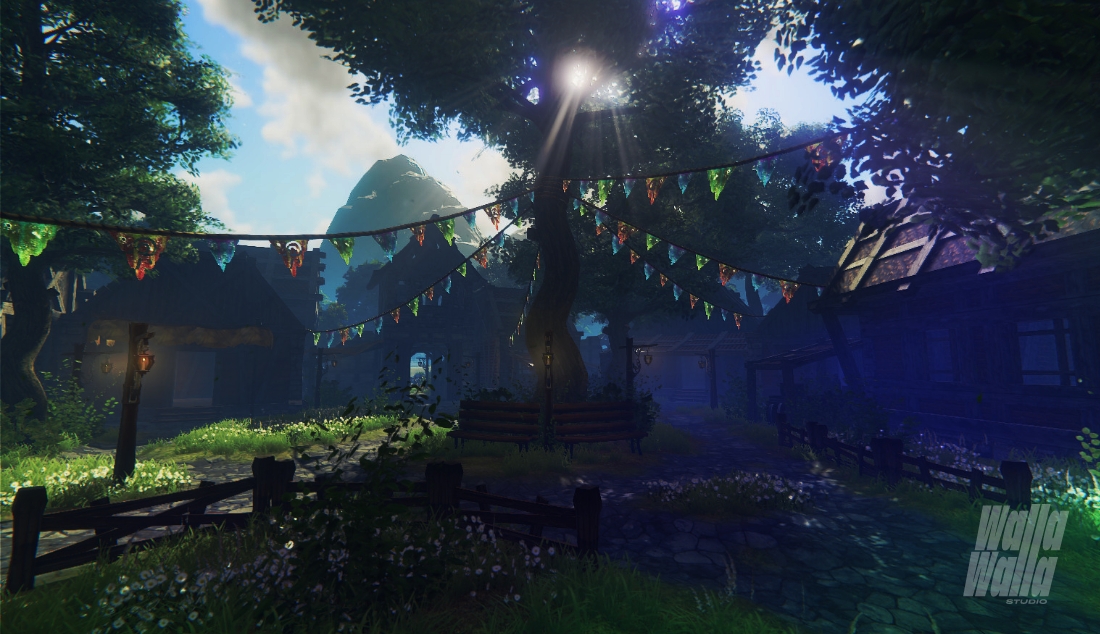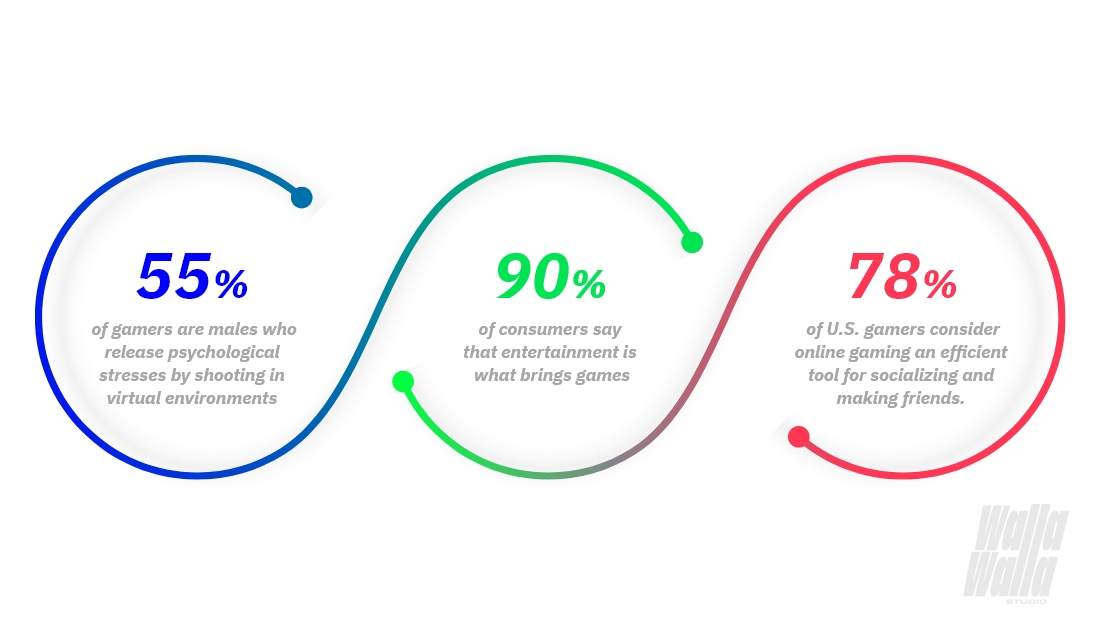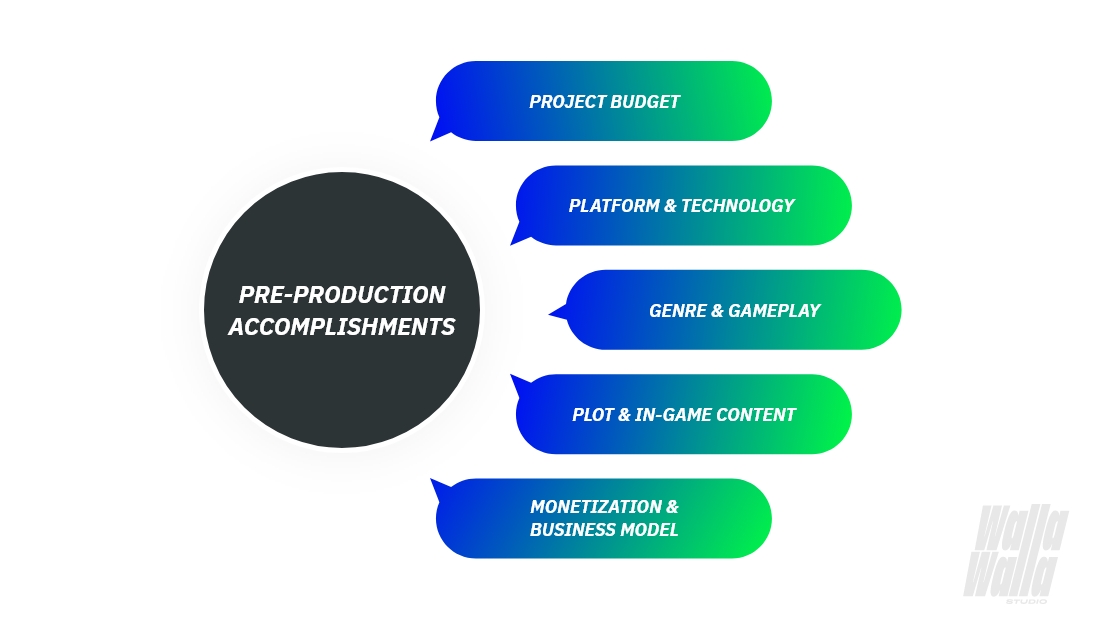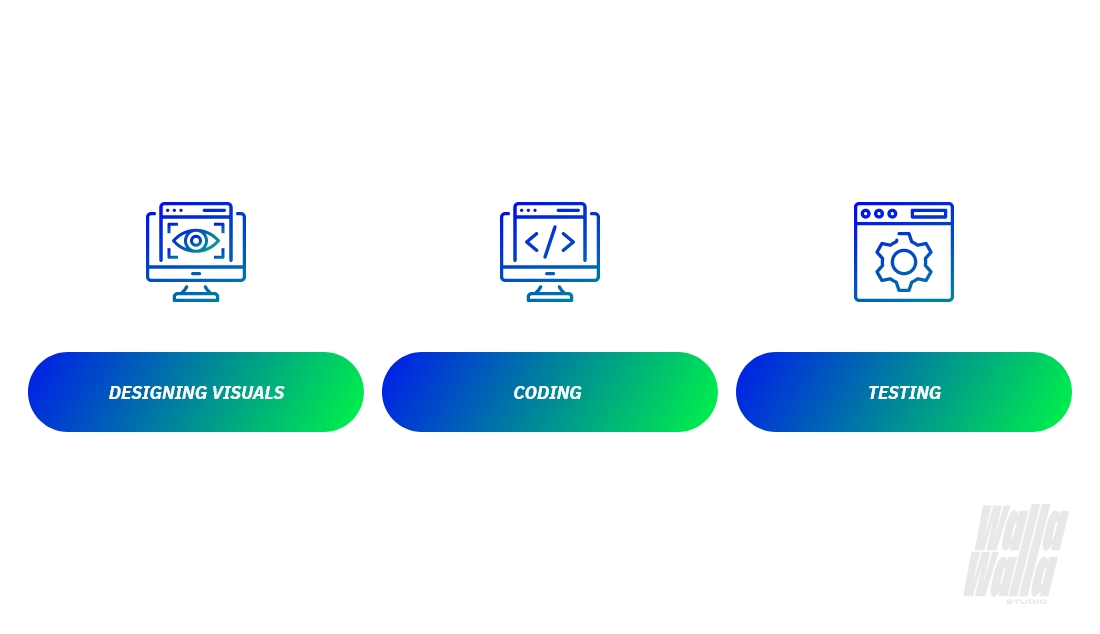 Search
Search

Politicians, philosophers, journalists, and various armchair experts agree that our civilization is stepping down into an era of turbulence and uncertainty these days. Numerous signs are fairly apparent: recurrent pandemic lockdowns seem to come back with the recently detected monkeypox, financial markets are running a fever with growing inflation, and hitherto unimaginable warfare is rampant in the center of Europe (Stand with Ukraine!).
Daily news drives the population to frustration and anxiety, showing that the real world is becoming tougher and tougher to live in. Is there another planet anywhere around to escape and find shelter? Fortunately, there is one. This is not about the long-running mission to Mars (regards to Elon) since people need a solution here and now. This is about the parallel reality of virtual space where the gaming industry sets the tone.
Portals to virtuality are within arm’s reach: smartphones, desktops, and game consoles provide access to “better worlds” with a couple of clicks. No magic, just technology. Anyone can become a lord of a virtual universe. How? By releasing another video game. What does one need for it? A decent game dev team is to be found and hired. Even though a wide choice of game development studios is available, what the “decent” term means in our context is worth understanding. We hope the present post is useful for those who are looking to hire gaming experts in 2023. Read, learn, and put your hesitations away. And here you can learn more about Walla Walla Studio’s game development services.
Critical things to know before hiring a game dev team

Developers usually complete the lion’s share of creative works over the game-building process. At the same time, some key issues are worth knowing by customers before the game development life cycle starts. Some of them belong to the recent gaming sector trends; the others are purely technical stages of a development process.
The following aspects can help realize the scope of work to be done, the genre to fit the future game best, and the sort of professionals to hire. The answer to the question of “how much does it cost to hire a game developer” seems to appear finally.
The game type and a target audience
The gaming industry never stops evolving throughout the ever-lasting technical progress in hardware development. According to stats, 57% of U.S. gamers prefer smartphones to play. Mobile gaming tends to keep outperforming desktops and consoles since the growing computing capabilities of smartphones provide a wider field for sophisticated visual effects inherent in games with fascinating plots.
Shooters remain popular because 55% of gamers are males who release psychological stresses by shooting in virtual environments.
The age criterion keeps following the general trend in gaming: the younger the gamers, the wider the audience. 81% of Gen Z users play video games, while only 77% of millennials do so. At the same time, the share of baby boomers (mere oldies in the eyes of younger generations) is encouraging – 42%.
Having fun is what gaming brings to 90% of consumers, while 87% of them recognize a mental stimulation effect in such an activity.
A social component is critical for gamers as it appears from stats: 78% of U.S. gamers consider online gaming an efficient tool for socializing and making friends.
All the factors mentioned above hint at the type of video game deserving of potential commercial success and promising target user audience.

Pre-production accomplishments
The game development life cycle can be conditionally divided into three stages: pre-production, production, and post-launch. Each one implies some particular steps and iterations to pass through. Here is what the pre-production stage makes both a customer and game developers thoroughly consider.

- Project budget. This is about the desired features and design creativity a customer may afford while hiring a game development studio. The budget puts objective limits on the desires and expectations of customers in terms of the average costs of various development services. It is crucial to see the limitations when the genre, plot, type, platform, and other aspects of the development process should be chosen. True professionals never refuse to consult a customer about what costs what before making a deal.
- Platform & technology. Different gaming platforms require distinct development technologies to be applied. It is up to a customer to decide whether PC, VR, console, mobile, or browser-based online solutions may fit the future product better. Neither a development technology nor a development team with appropriate expertise can be rightfully chosen without a predetermined gaming platform.
- Genre & gameplay. When the budget and platform are indicated, it is easier to realize whether, for instance, an AAA-class open-world RPG can be built under a current project. Besides, a customer should deliver a clear vision of the desired gameplay or, in other words, how gamers should interact with both the in-game world and each other. Professional advice can barely go amiss at this stage unless a customer is a professional game designer.
- Plot & in-game content. The storyline determines characters, inter-layer movements, avatars, guest/player modes, etc. The more diverse the in-game content, the more sophisticated the logic and plot. They directly impact the scope of work, the number of game developers, their skills, and, consequently, the final cost of the entire project. Figuring out a proper correspondence between the available budget and the plot’s complexity is hardly possible without experienced game producers to be engaged.
- Monetization & business model. The way of turning a gaming experience into profitable commerce depends on the attributes and characteristics of each particular gaming software. Applicable business models are diverse: a free-to-download mobile puzzle will obviously have a different monetization method than a tricked-out VR shooter. Hybrid monetization is possible as well: direct income from selling in-game items to players can go in parallel with indirect earnings from in-game purchases. Blockchain is adding opportunities to monetize gaming with NFTs of all stripes and colors. Although only the sky’s the limit in building software monetization, a particular business model should be selected at the pre-production stage.
Production process

The production stage is when a customer has to monitor how a development team turns into reality what has been indicated in the design documentation created at pre-production. The following accomplishments make game developers reveal their expertise:
- Designing visuals. Most video games deserve success only if the mechanics and design of in-game graphics meet user expectations. Artists create 2D and 3D visuals according to the plot. They deliver static prototypes of characters and environments to designers, who liven them up with various animation software. The more impressive the in-game visual effects, the larger the chance to make the game commercially successful. Take a look at Walla Walla Studio’s game artworks.
- Coding. A game development team is considered truly professional when visual designers and programmers can literally read each other’s thoughts. Years of hands-on software development with joint undertakings can only provide such a harmonized collaboration. Programmers should be able to transform the designers’ ideas into executable code. At the same time, designers should understand the programming limitations beyond which the code risks becoming too cumbersome in terms of the commercial viability of the final product.
- Testing. Coding ends up with testing as a rule. However, many up-to-date development approaches imply running tests parallel with programming routines at every iteration to achieve the finished version with no bugs and errors. Unlike many other types of software, video games require unprecedented efforts from testers who have to pass through the entire gameplay with all those levels, challenges, and achievements.
Post-launch operations
Improving user experience always remains relevant for video games, however perfect the released product may seem. The gaming software product is considered successful if users provide their feedback on how to make the gaming experience more exciting. Besides, many games have future-oriented plots that may evolve over time with new versions, updates, and special events. Hence, the development team should hardly get off the customer’s radar to stay in touch for technical support and other post-production routines.
Minimal knowledge of development technologies to hire a game development team
The gaming industry implies using specific technologies rarely applied to other types of software. It does not mean game developers stay far aside from the other software specialists, however. Nuances matter, but the basic development technologies such as C#, C++, JavaScript, and Python are hardly too alienated from the guys who build video games.
Fundamental skills in specific engines such as Unreal and Unity distinguish a game development studio from other software development vendors. Another set of competencies that game developers focus on includes 3D modeling, animation, and advanced audio editing.
Many gaming experts note a significant potential in such relatively innovative technologies as VR (virtual reality), AR (augmented reality), and MR (mixed reality) that can be combined under the general notion of XR (extended reality). VR seems to be the most promising for gaming unless some severe concerns about the technology occur. VR headsets remain pretty expensive to be affordable for a broad gamer audience. Besides, PCs and consoles require special software to work with VR hardware.
AR, on the other hand, has no such restrictions being less exciting than VR, at the same time. Kudan and Vuforia are among the most popular platforms for building AR gaming apps.
The complexity of a gameplay determines the applicable development technologies and the team’s size and composition. A minor possible development team includes a visual designer and a programmer. They are sufficient to create a simple mobile puzzle. In contrast, heavy console strategies and shooters may require hundreds of game developers to engage. To make no mistake in selecting development technologies and figuring out an appropriate team composition, a customer is recommended to get professional pre-production consultancy from game development experts.
How to hire a game development team?
If customers know what technologies the desired gaming software may require, they can hire dev teams with no significant constraints. Google is always to the rescue. A relevant query can drive a customer to numerous web resources dedicated to one or another development community. Freelance platforms such as Upwork offer a ton of individuals who introduce themselves as game developers of any sort. A more precise screening can be conducted through such special development platforms as TIGSource and IndieDB, for example.

Hiring models
However, the first thing worth figuring out is the type of hiring: remote freelancers act and cost differently than an in-house development team. In general, a few options are available in this regard:
- Full-time in-house employment;
- Temporary remote freelancers;
- Staff augmentation;
- A dedicated development team under the vendor’s management;
- An outsourcing game development model.
Each variant has its particular pros and cons. The first three ones imply continuous control, management, and coordination from the customer’s side. Unlike them, an outsourcing model and a dedicated development team do not require customers to be engaged in each and every stage of the development lifecycle. Customers participate in designing requirements at pre-production mostly; the rest of the responsibilities belong to the team executives as a rule.
Hiring costs
Hourly rates differ from model to model: full-time in-house game developers typically cost more than freelancers. Dedicated teams and offshore outsourcing vendors offer a sort of a “happy medium” in terms of estimated development expenditures. The origin and location of teams impact the cost of development as well. American developers are recognized as the most expensive ones, while Indian programmers represent the opposing pole, so to say. European game developers go somewhere in between to offer the best price/quality ratio.
In general, the Eastern European game developers and Ukrainian ones, in particular, represent an abundant labor resource in the gaming sector. They can boast a rich hands-on experience in numerous world-class software development projects. Their practical skills are backed by the initially high level of education. At the same time, more than reasonable pricing is inherent in their game development services. The following average hourly rates can provide a general insight into how much hiring game developers can cost in Ukraine:
- Middle Unity developer: $35 – $55;
- Middle VR developer: $45 – $65;
- Middle C++ developer: $38 – $60.
Besides attractive hourly rates, such factors as Western mentality, advanced English language, and innate creativity foster the position of Ukrainian outsourcing game development studios in the gaming industry.

FAQ
What is game development?
A complex of undertakings that ends up with a new video game appearing on the market should be a brief answer. In most cases, it begins with an idea of a new game, a sort of epiphany descending onto one’s mind. To turn the concept into reality is the task of a development team. The game development life cycle includes pre-production arrangements, a production process, and post-launch updates and improvements. The scope of works, timeline, and cost of a new product all depend on the type, plot, platform, audience, business model, and other project attributes. Professional gaming experts are here to provide valuable insights into each relevant aspect.
What does a game developer do?
A fully-fledged game development studio includes 2D-3D artists, programmers, QA engineers, and VFX/SFX specialists. All of them do a vast range of work in the scope of a particular project. To name a few, the following activities constitute a typical game development workflow:
- Creating design documentation ;
- Making in-game visuals;
- Designing UI/UX;
- Developing game logic and physics;
- Testing the codebase and playing through the final version to fix bugs and errors;
- Integrating a completed software with clouds and networks;
- Providing post-launch support and maintenance, etc.
What are the risks of game development outsourcing?
The main and, probably, the only risk of such a model is “insufficient understanding” or “miscommunication”. In contrast to the in-house developers, who work under the direct supervision of the customer, an outsourcing game development studio acts remotely, more or less on its own, after all pre-production arrangements are finalized. Both production and post-production may require various ongoing amendments/changes to be made by game designers and approved by the customer.
Anything can go wrong along the way. This is not about fatal technical errors (although purely technical issues are never excluded); this is about possible conceptual discrepancies that may arise due to different visions of the final game design that a customer and an outsourcer may covertly have. A robust and transparent communication protocol developed and approved by both a customer and a dedicated development team can mitigate such a risk.


